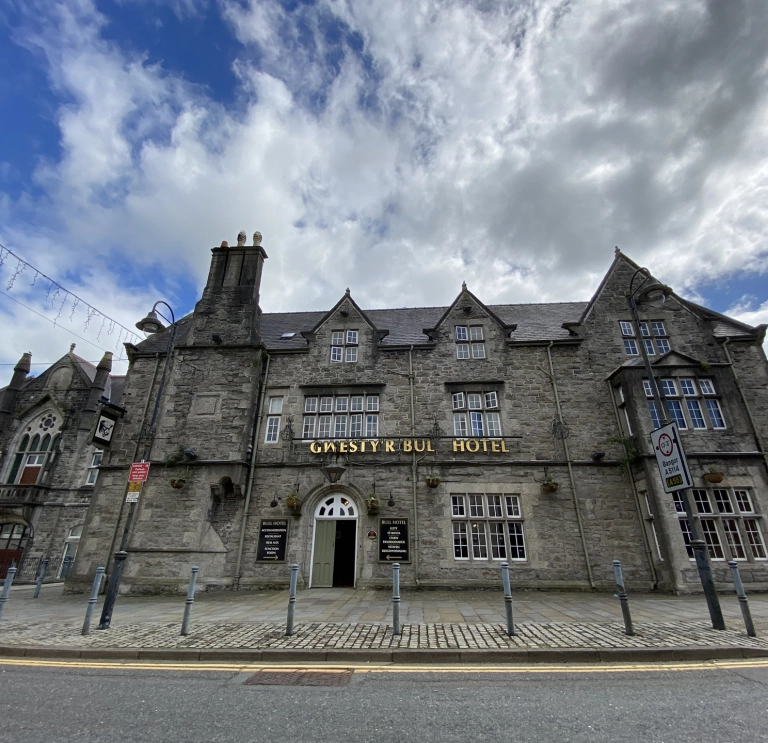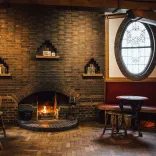All inns make their own history. In the timbers of their bars, in the beams of their roofs, in the sticky carpets on their floors, stories seed and grow. But some inns have older – or stranger – histories than others. Here are some public houses in Wales where their fables are as famous as their welcome.
Horse and Jockey, Wrexham, North Wales
You might be surrounded by a busy, modern high street – vibrant eateries and the all too familiar chain stores. But there, amongst them – no, your eyes are not deceiving you – stands a striking thatched building. It looks as if it has just landed there from the seventeenth century, which of course is when it was built. The Horse & Jockey has been an inn for at least two hundred years and some of the original timber beams are still visible inside. The place was named in honour of the jockey Fred Archer (1857-1886), a star of horseracing fame.
However, the inn claims another famous character, George – the ghost. On one occasion, he saved a cleaner as she fell off her chair, giving her more of a fright than the fall itself.
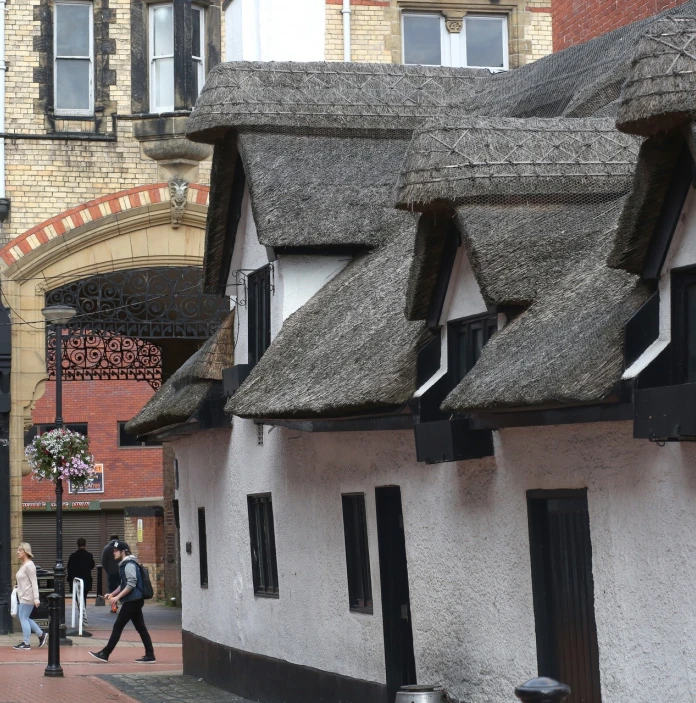
Llindir Inn, Henllan, North Wales
This is another inn proudly topped with a thatched roof. And, like the Horse and Jockey, it attracts customers from all parts. Here, a young girl called Sylvia, throttled by her jealous boyfriend, lurks in the rooms. It is unlikely that she is alone for this building dates from the thirteenth century. As its Welsh name suggests, large crops of flax were once grown in this area (‘llindir’ means ‘land of flax’). The striking church of St Sadwrn nearby heightens the atmosphere.
Find out more on the Llindir Inn.
The Bull Hotel, Llangefni, Anglesey
The Bull Hotel in the centre of town once served the stagecoach in Victorian times, evidenced by the old stables and coach-house. However, an older inn called Pen-y-bont stood here long before those days. It is said that Mozart called there when he visited Britain with his father as an eight-year-old.
In the nineteenth century, the building was totally renovated by the wealthy Bulkeley family who once owned land throughout Anglesey. The family coat of arms sports three bulls, which explains the new name given to the inn.
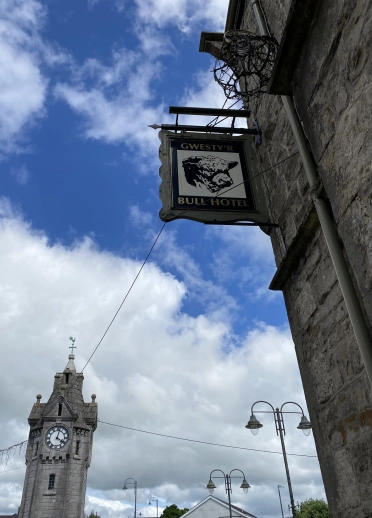
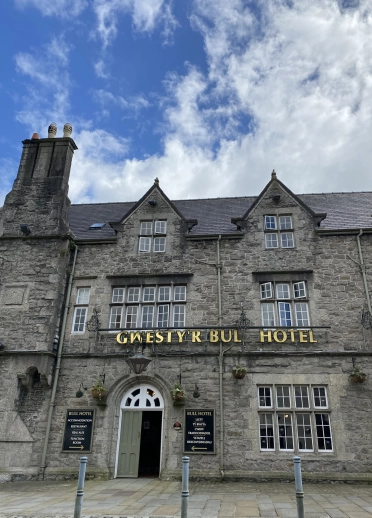
The Bulls Head Inn, Beaumaris, Anglesey
If you pop into The Bulls Head Inn today, there is no avoiding the link with Charles Dickens. He stayed here when he came to Anglesey to document the wreck of the Royal Charter, and each room at the hotel is named after one of his characters. But the inn has more to offer. The roof beams date back to 1472, and this building was the headquarters of General Thomas Mytton and his forces at the siege of Beaumaris during the English Civil War.
Life took a more peaceful turn a century later when the Quakers met here in 1733 – one of the first legal meetings of its kind to be recorded on the island.
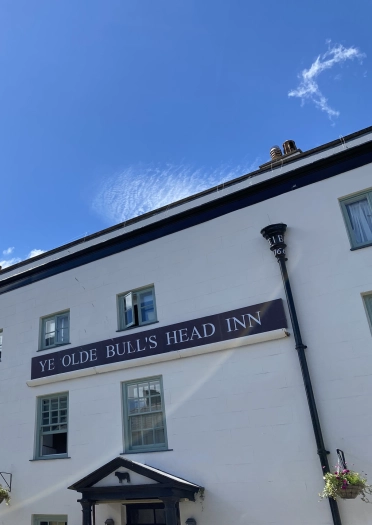
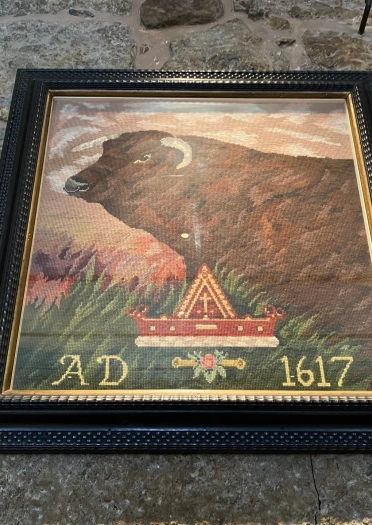
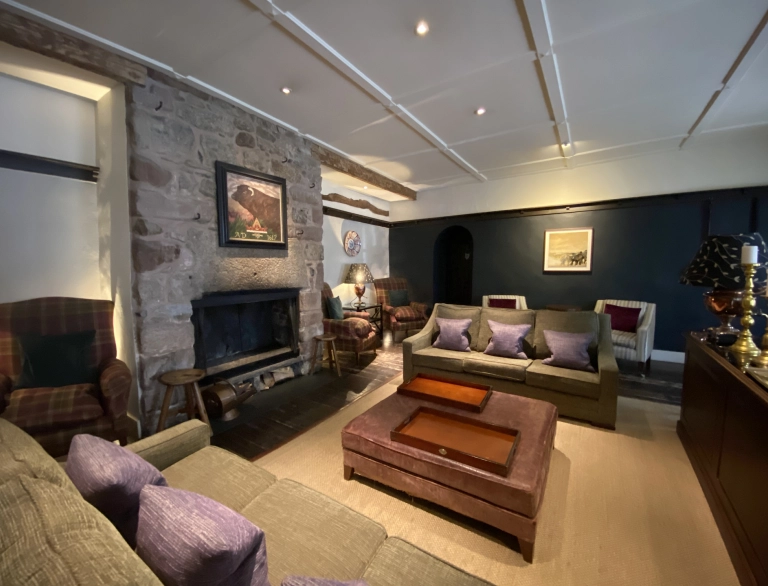
Garddfon Inn, Y Felinheli, North Wales
The Garddfon Inn has a superb setting on the banks of the Menai Straits. The taste of salt in the air takes us back to an age when this waterway was packed with ships and boats carrying cargo to all four corners of the earth. Or even further back again – two thousand years perhaps – as the Romans and Druids faced each other in a bloody battle on the land opposite.
When Edward I came to conquer in 1282, another bloodbath ensued at the battle of Moel y Don. Llywelyn’s army defeated the English who had been caught out by the tide. You could have witnessed it all happening from your spot by the window, sipping your G&T.
Tafarn y Plu, Llanystumdwy, North Wales
This two-hundred-year-old inn is now run by a community enterprise – a growing trend in this part of the country which has saved numerous small pubs from disappearing. Many are drawn here by the David Lloyd George connection – he of course being the only Welshman to become a British Prime Minister. He held office between 1916 and 1922. Lloyd George was raised in Llanystumdwy, and, a stone’s-throw away, on the banks of the river Dwyfor, you will find his grave.
A little further uphill is Tŷ Newydd, where he spent his last years. Tŷ Newydd is now the home of the National Writing Centre, so some of the country’s great authors occasionally pop into the Plu for a drop or two.
Find out more on Tafarn y Plu's Facebook page.
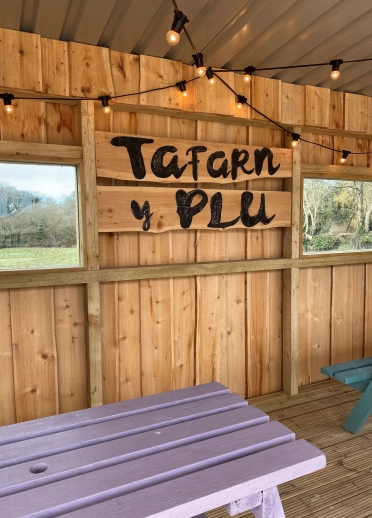

Pen-y-Gwryd Hotel, Nant Gwynant, North Wales
The Pen-y-Gwryd Hotel, nestling under the peaks of Yr Wyddfa (Snowdon), is world famous in climbing circles. This is where Hillary, Tenzing and the team lodged when training in Eryri (Snowdonia) before conquering Everest in 1953. For this reason, it attracts pilgrims from all parts. But the place also has a timeless quality, dominated on all side by the soaring slopes. Just down the road are the ruins of the old Roman camp at Dyffryn Mymbyr, reminding us that people have come and gone over the centuries, even in these most remote patches of land.
George III Hotel, Penmaenpool, North Wales
Half of the George III Hotel, sat on the banks of the Mawddach estuary, was once a ship-chandler’s workshop while the other half was a public house. The building probably dates from the middle of the seventeenth century. In those days, as you sipped your drink, you would be surrounded by seafaring activity and a buzzing ship building industry. Later, the trains of the Cambrian Railway would have roared passed, hissing their steam on their way from Dolgellau. Although the railway has long disappeared, the timber toll-bridge still stands over the estuary, as it has done since 1879.

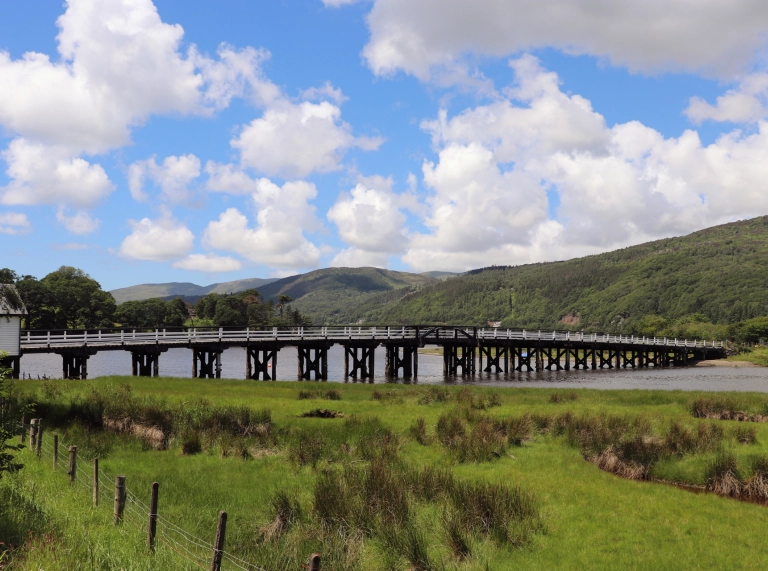
Rhys IorwerthAll inns make their own history. In the timbers of their bars, in the beams of their roofs, in the sticky carpets on their floors, stories seed and grow."
Y Talbot, Tregaron, Mid Wales
Another of the drovers’ arms, Y Talbot nestles in the Cambrian foothills. George Borrow describes it vividly in his volume Wild Wales, as he recounts his walk through the country in 1854. As an Englishman, he was relieved to receive a warm welcome here. Although the President of the United States, Jimmy Carter, stayed here twice in the 1980s, another story dating back over a hundred years sparks the curiosity of many a visitor.
Rumour has it that an elephant called Jwmbo was buried in the pub’s beer garden when it died on a circus visit to the area in 1848. Despite various attempts to discover its resting place, all efforts have so far been in vain.
Tafarn Sinc, Rosebush, West Wales
Tafarn Sinc was initially an inn on the old railway line. It now takes its name from its red zinc external cladding. All around are old farming artefacts – reflections of a bye-gone age. A stone’s throw away, amongst the astounding beauty of the Preseli hills, you can discover unique and original examples of ‘tai unnos’ (houses built in the space of one-night on common land) – such as the Carnabwth cottage. This was once the home of Thomas Rees, leader of the Rebecca Rioters, who rebelled against the tyranny of the toll-gates in the mid 19th century.
No Sign Wine Bar, Swansea, West Wales
Like Browns in Laugharne, the No Sign Wine Bar was one of Dylan Thomas’ regular haunts in the 1930s. It was originally the home of wine merchants called Munday, and the cellars where the wine was stored date back to the fifteenth century. The bar itself opened in 1690. But what’s behind the strange name? Well, licensing laws demanded that all public houses in the town had to be named. However, as this was a bar rather than a public house, no signage had been provided. To right matters, a sign entitled ‘No Sign’ was erected, and the name has lasted to this day.
The Old House 1147, Llangynwyd, South Wales
One can be pretty sure that The Old House 1147 is the second oldest inn in Wales, dating back to 1147. The thatched roof and the views over Nant-y-Gadlys are striking, but so too are the fables and folklore relating to the place. The inn’s sign itself portrays the Mari Lwyd, reflecting the popularity of the old wassailing tradition in the area. This village too was the home of Wil Hopcyn, the author of the folk song ‘Bugeilio’r Gwenith Gwyn’, based on the romantic, heart-breaking tale of the Maid of Cefn Ydfa.
Acknowledgements
Ian Parri, Favourite Watering Holes (Gwasg Carreg Gwalch, 2008);
Myrddin ap Dafydd, Welsh Pub Names (Gwasg Carreg Gwalch, 2016).

